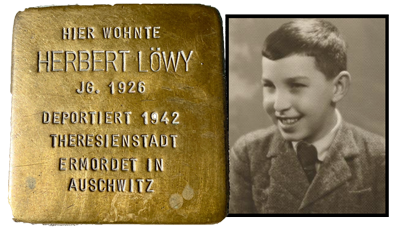Josef BICHLER was born in a rural Salzburg community near Bischofshofen (about 55 Km south of Salzburg) on November 18, 1913.
He was the older of the two sons of Pauline Bichler née Bürgler and her husband, an engine driver for the Austrian RR and an active member of the Austrian Social-Democratic Labor Party who was also named Josef Bichler. The young Josef BICHLER was baptized in the Roman Catholic Church.
After the end of the Habsburg Monarchy in 1918 the Bichler family lived in Gnigl (which is now part of the city of Salzburg, but which was then an independents community).
Their son Josef completed secondary school and trained as a locksmith. He was active in social democratic youth and sports clubs, as well as in the Social Democrats’ Republican Defense League militia – until the socialists’ party and organizations were crushed by the Dollfuss dictatorship in February 1934.
During the crisis years, Josef BICHLER wanted to become a railway worker, but he had to complete his compulsory service in the Austrian army first. Then, his career dreams couldn’t be realized under the adverse political conditions of the Austro-Fascist dictatorship.
He was a beer supplier for a while and lived in a community house at 19 Kreuzstraße in the district of Itzling with his parents – his last registered address in Salzburg under the Nazi regime.
It is undisputed that Josef BICHLER was an anti-fascist and an opponent of the war, although research reveals only a small amount of data about his activities.
He was 26 years old when he was drafted into the German Wehrmacht in the autumn of 1939 and was arrested by the Gestapo headquarters in Vienna at the end of August 1940 for »communist activities«.
On April 2, 1941, when Germany and the Soviet Union were supposedly on friendly terms, the German Wehrmacht member Josef BICHLER was sentenced to two years in prison by the Reich Military Court in Vienna for »preparing high treason«, as can be seen from daily report number 12/41 of the Gestapo headquarters in Vienna on the »Communist Movement«.
Josef BICHLER was initially forced to do forced labor as a prisoner in one of the notorious Emsland Moor concentration camps (where the famous Peat Bog Soldiers protest song was written). He was then transferred to a Wehrmacht prison in Torgau, and then to the Wildflecken military camp to recruit him as a penal soldier who would prove himself on a war front.
On July 2, 1942, about a year after the attack on the Soviet Union, Josef BICHLER was assigned to the Eastern Front in the 550th Penalty Battalion.
He deserted after a few months by defecting to the Soviet Army. The penal soldier thus became a prisoner of war.
During his imprisonment in the Krasnogorsk camp near Moscow, he took the opportunity to attend courses at the Lunjowo anti-fascist front school run by the Soviet military intelligence service.
His subsequent service for the Soviet Union, however, remains a mystery. It also remains unclear how he was discovered in Nazi Vienna towards the end of the war year in 1944.
Was he a spy? Other explanations are less credible.
In any case, Josef BICHLER once again fell into the clutches of the Vienna Gestapo headquarters at Morzinplatz, where he was fingerprinted on December 20, 1944, along with photos showing him in a Wehrmacht uniform.
There are no further traces of life, which means that 31-year-old Josef BICHLER did not survive his imprisonment at Morzinplatz. He was a Gestapo victim whose death, remarkably, was not officially registered anywhere at any time – just a covert victim of terror and murder.
It is certain that his parents died during the war years, and that his younger brother Fritz survived the liberation. However it is not known what traces of memory Josef BICHLER may remain in the family’s memories.
Sources
- Archive of the Archdiocese of Salzburg: Register books
- Salzburg City and State archives: Police and local citizenship registrations
- Widerstand und Verfolgung in Salzburg 1934-1945, vol. 1, Vienna 1991, p. 455f.
- Documentation Archive of the Austrian Resistance (Zl. 19049/55)
- Holocaust Memorial Museum: Gestapo-Leitstelle Wien (Tagesrapport Nr. 12 vom 28. – 29. Mai 1941: »Kommunistische Bewegung«)
Translation: Stan Nadel
Stumbling Stone
Laid 09.09.2024 at Salzburg, Kreuzstrasse 19



